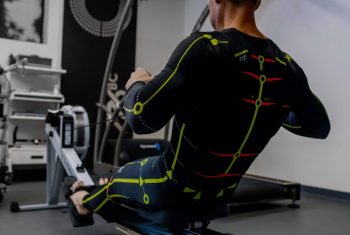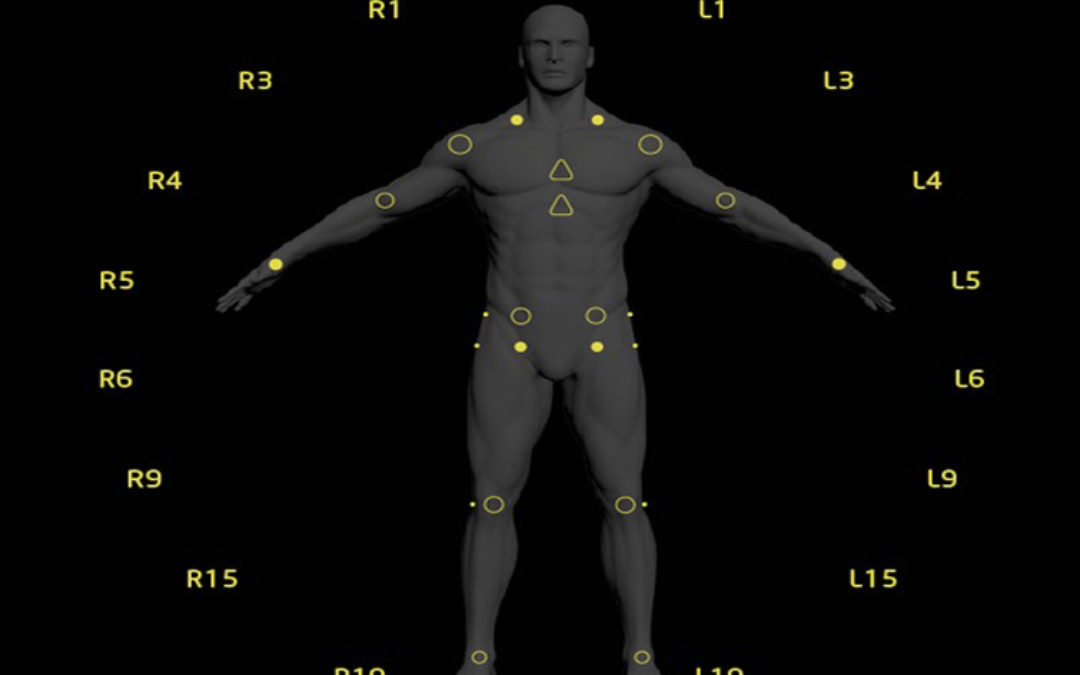Introducing MOTION; an all new way to look at movement
This week we are proud to flag the creation of a brand new and exciting product in the sports sphere. A performance collaboration with our friends and fellow innovators at 776BC has helped them to create a new range of apparel titled MOTION, which is set to blow the top off traditional motion capture, movement coaching and self-coaching, and all you need to do is put on some clothes.
See the introduction video on YouTube.

Bio-mechanics, by it’s definition, is the science of movement. Understanding how we move is like flipping open a book that tells the story of our performance, injury risk, health, efforts, energy and ability.
In the past the only way to get a truly objective analysis of our movement was in the lab, using expensive and often cumbersome equipment that only the most elite teams and athletes had access to. Even then, you couldn’t truly move with the freedom you would in competition or real training.
How do we measure effectively where it really counts – out on the field, in the gym, unrestricted, possibly in competition and even when we are on our own – without a team of scientists to help? As a coach or a trainer, how can you accurately detect and then describe the correct form or technique to an athlete moving quickly, often in a poor line of site and changing positions?
These are all questions we delved into when developing the ideas behind the Motion series. A group of fabric and design experts blending with ex and current elite athletes in a range of sports with sports medicine and science experts and, finally, app developers all in one room. A very diverse set of skills but we all had one goal in mind – creating an accurate tool to help athletes and performance staff understand motion, in the least invasive way possible.
The lines and points used on the Motion range of suits and garments have been distilled from gold standard lab-based practices using extensive motion capture technology and sports science experience. All you, or your athletes, need to do is put them on and go.
The markers accurately help to display ranges of motion, describe segments, trace patterns of movement and pick apart keystones that show cause and effect for performance and even injury risk.
For example, we can clearly identify how flexed the knee is when an athlete prepares to cut, how much a rower side-bends through their mid spine through the stroke or why an athlete’s shoulder moves before the bar is shifted in a deadlift. We can answer questions like “Am I really lifting, jumping or shooting correctly when I train?”.
Predicting or describing injury risk is one of the absolute dark arts of sports analysis and nothing has proven very reliable even though the field has exploded. There is excellent data, however, linking reactive movements and movement quality to injury risk and this is something the suits are made for – any movement, anytime, any environment you will be able to see what yours or your athlete’s compensations, actions and reactions are to the skills they perform.
In the gym, one of the keys behind good performance and avoiding injury is getting the fundamentals of the technique correct. Most of us don’t have the luxury of a trained S and C coach by our side every time we lift or train but with the system we have created you can be your own coach and start to really improve the effectiveness of your valuable hours of training. Why repeat a movement if you are never actually perfecting it?
The value in the Motion range is in helping everyone realise where they can become a better athlete and keeping them safe while they’re at it. From the sidelines it enhances what the best coaches, medical and training staff are doing already by highlighting what they need to look for and giving an objective perspective to it – it makes their jobs easier.
Keep moving and moving well.
Link:
https://www.776bc.com.au/default/motion
White Paper PDF on MOTION:

